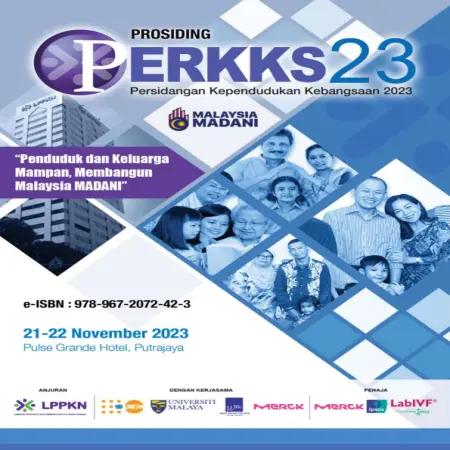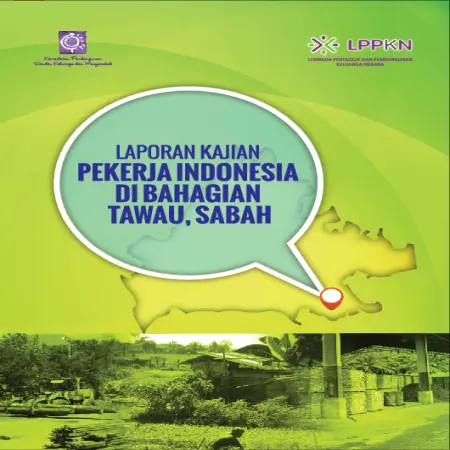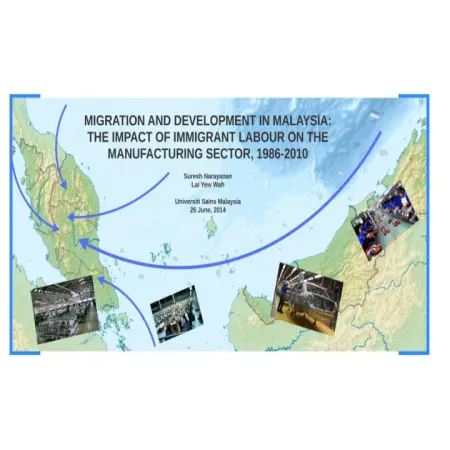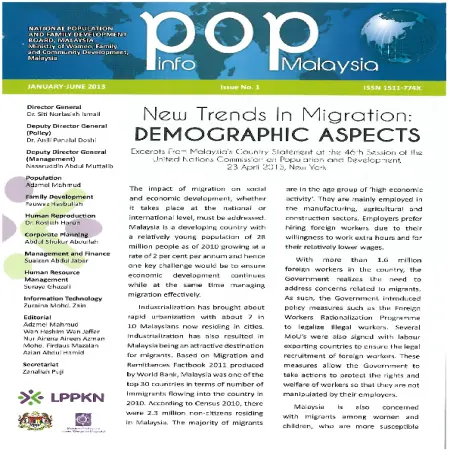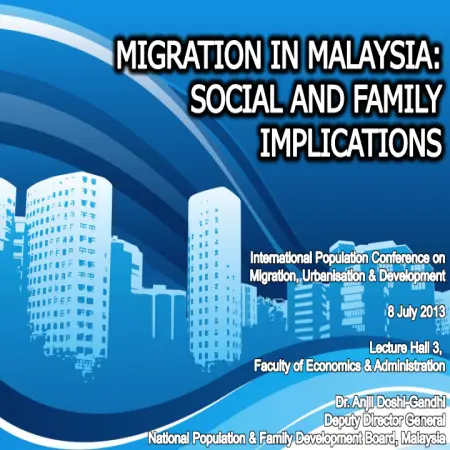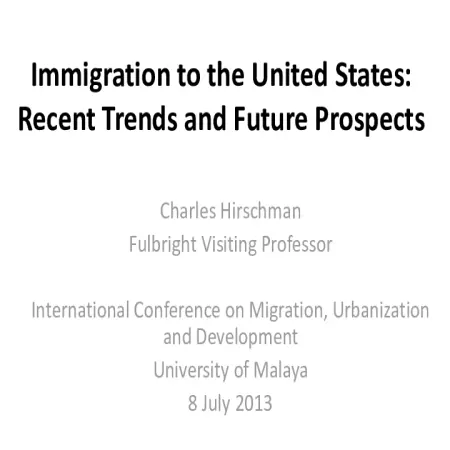TOPICS
Results for Topics : "Migration"
|
Population redistribution and concentration in Malaysia, 1970-2020
Item Type: Scientific Poster
Year: 2024
Abstract: Migration, population redistribution and development are closely interrelated. Uneven population growth and distribution are the results and causes of religion and urban-rural disparities in development. Population distribution has changed significantly since 1970. 22% of the national...[Read More]
|
|
|
|
|
|
Prosiding Persidangan Kependudukan Kebangsaan 2023 (PERKKS 23): “Penduduk dan Keluarga Mampan, Membangun Malaysia MADANI”
Item Type: Book
Editor:
Year: 2023
Abstract: Collection of papers presented during the 2023 National Population Conference (PERKKS 23), 21-22 November 2023, Pulse Grande Hotel, Putrajaya.
|
|
|
|
|
|
The 51st session of the commission on population and development :general debate on sustainable cities, human mobility and international migration, New York
Item Type: Country Statement
Year: 2018
Abstract: Malaysia has taken the initiatives to systematically coordinate sustainable urban planning and development, with emphasis on a balanced development; physically, environmentally, socially and economically, such as through the introduction of the Safe City Concept, and Go Green Kuala...[Read More]
|
|
|
|
|
|
Sustainable cities, human mobility & international migration
Item Type: Newsletter
Editor:
Year: 2018
Abstract: Over the past decades, Malaysia has experienced and influx of migrant workers, and has become one of the main destinations. In 2016, there were an estimated 3.1 million migrants in Malaysia, which comprises of 1.3 million skilled workers and 1.8 million unskilled workers.
|
|
|
|
|
|
Analisis strategi kelangsungan hidup migran pekerja Bugis Indonesia ke Sabah
Item Type: Conference or Workshop Item
Year: 2016
Abstract: Bugis migration to Sabah especially the Tawau Division in the 19th Century not only had provided the workforce but also created the early Bugis community in Sabah. They had assimilated with local people and become Malaysian citizens after the formation of Malaysia in 1963. Bugis...[Read More]
|
|
|
|
|
|
Laporan Kajian Pekerja Indonesia di Bahagian Tawau, Sabah
Item Type: Research Report
Year: 2014
Abstract: In 2009, the National Population and Family Development (NPFDB) has implemented a Strategic Plan Review Second Population (KPSK-2) which takes consider relevant new policies and scenarios demographics and families as well as changes that occurred over a period of a decade and a half...[Read More]
|
|
|
|
|
|
Migration and development in Malaysia: the impact of immigrant labour in the manufacting sector, 1986-2010
Item Type: Conference or Workshop Item
Year: 2014
Abstract: The heavy reliance on immigrant labour in manufacturing remains a contentious issue and we address three concerns with respect to their impact are did they displace native workers or complement them? Did their influx impede real wage growth? And did they lower real productivity growth?...[Read More]
|
|
|
|
|
|
New trends in migration: demographic aspects
Item Type: Newsletter
Editor:
Year: 2013
Abstract: Industrialization has brought about rapid urbanization with about 7 in 10 Malaysians now residing in cities. Industrialization has also resulted in Malaysia being an attractive destination for migrants. Based on Migration and Remittances Factbook 2011 produced by World Bank, Malaysia...[Read More]
|
|
|
|
|
|
Migration in Malaysia: social and family impact
Item Type: Conference or Workshop Item
Year: 2013
Abstract: This paper highlights the key findings from surveys done by the Ministry of Women, Family and Community Development (MWFCD) and the National Population and Family Development Board (NPFDB). The Survey on the Implications of Employing Foreign Domestic Helpers (FDH) on the Family...[Read More]
|
|
|
|
|
|
Immigration to the United States: recent trends and future prospects
Item Type: Conference or Workshop Item
Year: 2013
Abstract: The United States is popularly known as a “nation of immigrants.” For recent immigrants and their descendants, this term means that they belong part of a long tradition of peoples who came the United States seeking economic opportunity, fleeing injustice or oppression in their...[Read More]
|
|
|
|
|






